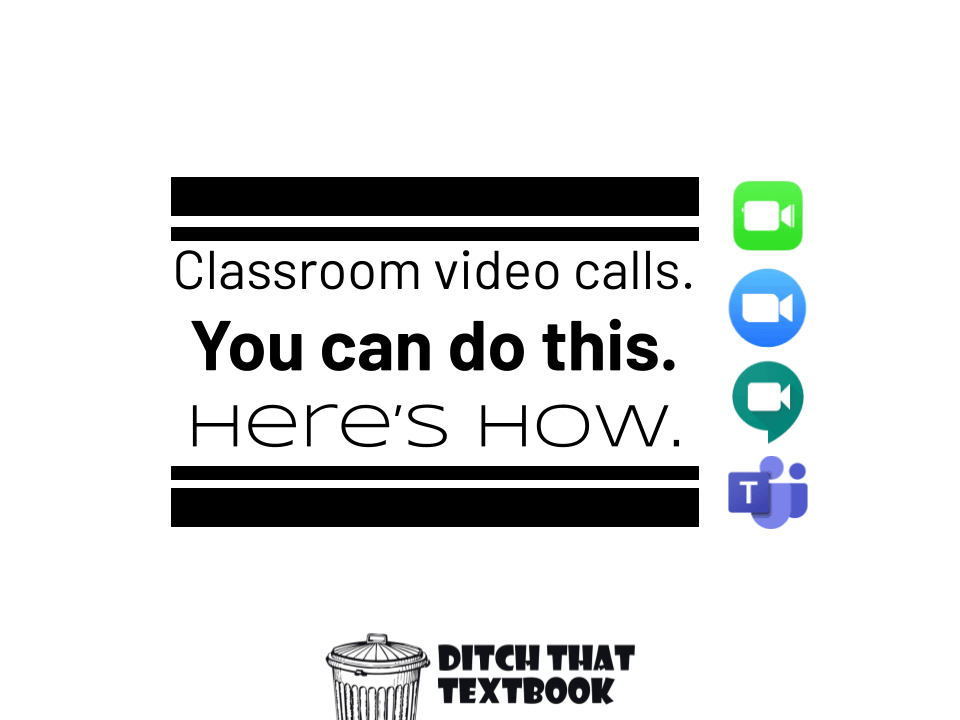
Chances are, you're already doing video calls in your personal life. Using them in the classroom is easier than you might think! Here's how.
Chances are, you’re already using video calls in your personal life. You FaceTime your far-away family or Zoom with friends from other countries.
“Use it in the classroom, though? I wouldn’t know where to start,” many educators say.
Or maybe you're one of the countless teachers across the globe who were forced into classroom video calls during the 2020 COVID-19 pandemic.
Want to know where to start? Looking to step up your video call game?
You’ve got this. You can totally do it. Here’s how.
5 tips: Classroom video calls for eLearning, distance learning
Video calls are one of the ways we stay connected to our students and staff during eLearning days. At the time of this post update we are all currently engaged in distance learning days for what may be the remainder of the academic school year.
So how can we get started with video calls or how can we continue to utilize them to create a valuable learning experience for our students? Here are some tips and ideas.
1. Choose your platform for video calls.
There are lots of options out there and most are very easy to use. Teams, Zoom and Google Meet are all easy to use video conferencing platforms. Check them out and choose the one that's right for you.
If you're feeling like you need some help getting up and running with your video platform check out "How to use Google Meet for eLearning, online learning".
This post includes a step by step guide to starting a live video call with Google Meet.
2. Give your students some norms ahead of time.
When students know what's expected, it helps them to do what's right. This is especially helpful when students are in a remote learning environment, where you -- the teacher -- aren't on hand and keeping a watchful eye. The infographic above can provide some guidance.
3. Set an agenda for your class.
4. Give everyone an easy way to check in when they log on.
This helps the teacher know who is present -- and lets the students know who else is in the call. Students can do this through the chat window with a simple "hello". Answering a fun question, like "What's your favorite superhero?" or "What did you have for breakfast?" can put an engaging twist on it. Check-ins like this mean you don't have to "take roll" in front of everyone.
5. Keep the pace steady.
Keeping a steady pace means that you're more likely to end the call on time. Momentum is key. With children or adults, when it seems like the speaker is spinning his/her wheels, it's easy to lose focus. Giving students a way to engage with you can maintain this momentum, too. Ask them for a thumbs up to the camera if they're with you. Use another app like PearDeck, which lets you deliver slides that students can interact with. Check out this post from Stacey Roshan for more ideas for keeping classes connected with Pear Deck.
5 ideas: Building student relationships during elearning, distance learning
During elearning times -- especially extended ones -- relationship-building is crucial. If your class is full-time distance learning, student success and morale will depend on it. If you're temporarily doing distance learning, building relationships virtually will help with the disruption to social connections and routines.
Here are some ideas for using video calls to help students build and maintain relationships with each other -- and with their teacher.
1. Do a check-in call.
How are you doing? How are you feeling? Is there anything we can do to support you? Especially in times of isolation and crisis, this may be the most important question asked in an educational setting. In the video interview below, Global Teacher Prize Top 10 Finalist Mike Soskil shares how students and teachers can foster empathy, humanity and compassion during remote learning times.
2. Let students share what they've been learning.
Students learn a LOT outside the confines of school. They have their own interests, their own curiosities. What have they been learning? Give them some face time in a video call to share with the class.
3. Do a book talks discussion.
4. Interview guests for the class.
No matter where students are when they participate in class video calls, there are likely others around them. The adults surrounding them have vast experience to share. Even the children around them have something to teach others! Let a few students bring a guest on camera with them. Have them ask a few pre-determined questions, and try to stick to a time limit. Let fellow students ask follow-up questions. This keeps learning going, but it also helps the class get to know their fellow classmates -- and their families.
5. Share traditions and daily life.
Learning a little bit about classmates' daily lives -- or the traditions that their families practice -- can build relationships and help students know each other better.
20 ideas: Using video meetings with students
- Reading aloud creates a classroom community by establishing a known text that can be used as the basis for building on critical thinking skills that are related and unrelated to reading.
- Discussions generated by reading aloud can be used to encourage listeners to construct meanings, connect ideas and experiences across texts, use their prior knowledge, and question unfamiliar words from the text.
- Reading aloud gives students an opportunity to hear the instructor model fluency and expression in reading technical or literary language. “Through intonation, expression, and attention to punctuation, the reader demonstrates meaning embedded in the text.”
- Reading aloud helps students learn how to use language to make sense of the world; it improves their information processing skills, vocabulary, and comprehension.
12 steps: Using video calls for guest speakers
Once, I got the fantastic opportunity to teach a lesson in a fifth grade classroom. The teacher, who knows me, asked, “Would you like to do something special with them?”
Ooh, YES, I responded. I knew exactly what to do.
They had been studying natural disasters and had not talked about hurricanes yet. Hurricanes had been very much in the forefront of news broadcasts and the minds of everyone in the United States with Harvey, Irma, Jose and Maria blowing through within weeks of each other.
We needed to talk to some kids who had ridden out the hurricane in their homes. So that’s what we did.
The process we used to find and connect with virtual guest is one you can follow, too. These steps work for traditional face-to-face classes as well as virtual, remote classes.
Steps for successful guest video calls:
1. Decide why you want to do it and what you’re curious about.
Why was it important to do this video call? For me, it all starts with the importance of communication. It’s constantly surging up the lists of important job skills for the future.
Plus, collaboration will be increasingly important. As easy as communication — even global communication — is anymore, the phrase “better together” comes to life more and more.
What are you curious about? This is a great question to brainstorm with students. There’s a variety of ways to find topics:
- Full-year topics
- Topics based on current unit or lesson
- Topics with a thread throughout several units
- Current events topics
- Curiosity topics that connect to content
2. Brainstorm the kinds of people who can help.
You don’t have to know the people you might get on a video call. But when you know the type of people you’re looking for, you can do something with that. Think of the kind of expertise and experience you’d like your guests to have.
3. Start targeting a list of potential guests.
I list six places to find virtual guests and field trips in the section below this one But before we do that, know this first …
This is the part that gives teachers anxiety the most. Part of it is interacting with people they don’t know. The other part is fear of the unknown — and fear of failure.
Now that we know what the common fears are, we can start to confront them.
- Interacting with people you don’t know: People are generally helpful — especially when kids are involved. (Plus, if the worst thing they can say is “no”, just move on if they do.)
- Fear of the unknown: You might not have done this before, but teachers all over the world do it all the time and rave about the results.
- Fear of failure: If you can’t find anyone that will help, you’re back where you were when you started — no worse off than before. The potential consequences are nearly non-existent, but the potential benefits are off the charts.
4. Start reaching out.
You never know who you’ll get until you start reaching out. Case in point: A sixth grade girl wrote a fan letter to basketball superstar Shaquille O’Neal. He surprised her by saying he would video call with her school and imparted some great wisdom. See the video call here!
It can also come together faster than you think. Don Wettrick is an Indiana educator who teaches a class called “Innovation and Open-Source Learning.” His students were curious about the Israel/Palestinian conflict. Don encouraged them to reach out to any sources they could find on both sides of the issue. Within DAYS, they had set up video calls with people in Israel and Palestine and were asking their questions to them personally.
5. Get your video call platform up and running.
Get a Zoom account and install Zoom. OR log in to Google and go to meet.google.com. OR make sure your FaceTime is ready to go.
Does this step seem out of place? Worried about having the tech set up before you start finding virtual guests? If so, YOU may have things out of sequence. Here’s why:
Focusing on learning the tech first can be a never-ending cycle. Plus, there’s so little about Google Meet/Zoom/FaceTime that you really need to know to make this happen.
If you get your guest(s) lined up first, you’ll be forced to get your tech ready and you’ll figure out only what you’ll need to make it happen. This keeps you from getting stuck in the techy mud, so to speak.
If you're still feeling like you need some help getting up and running with your video platform check out "How to use Google Meet for eLearning, online learning".
This post includes a step by step guide to starting a live video call with Google Meet.
6. Start scheduling.
Get on your virtual guest’s calendar — and get it scheduled on yours. Coordinate. And don’t forget about the time zone. Be overzealous about stating which time zone you’ll be using. (Often, I’ll state both my time zone and my guest’s time zone every single time I list a time just to be safe.)
7. Make a plan for each call.
There’s no magic formula here. You don’t have to take a class to come up with a plan. Envision how the conversation might go and how it could fulfill your goals and those of your guest.
“Plan your work for today and every day, then work your plan.” — Margaret Thatcher
Like Margaret Thatcher suggests, “work your plan” — change it as necessary as the day draws near or even while the call is going on.
Oh, and communicate your plan with your guest. When your plans are in sync, you can both help each other reach your goals for the call.
8. Do a practice call.
This is the easiest way to ward off technical glitches that can derail your precious time together. Do a practice call a day or two before the live call with your class. Make sure you can connect and the audio and video work. If there are problems, you have time to fix them (or get someone to help you fix them!).
Don’t worry about it being awkward. I’ve done tons of these practice calls. If you’re worried about the awkwardness, here’s the script for most all of my practice calls:
- Say hello. Smile.
- Thank them for agreeing to do the call. Tell them why you’re excited to be doing the call. Continue to smile.
- Ask if the video and audio are good on their end. Tell them it looks good on your end. (If there are problems, see if you can work them out together.)
- Ask any questions you have. See if they have any questions. Smile while asking.
- Confirm the time/date/length of the call.
- Thank them again. Smile. Hang up.
Also check out the 5 tips for successful guest video calls below.
9. Prep your students for the call.
There’s not much to this, either. Let them know what your plan is. Discuss behavior expectations. Encourage students questions, brainstorm some possible questions and leave them on the board so kids can use them as necessary. Tell them why you’re excited to be doing this and why you think it’ll be great for everyone.
Planning a guest video call on an eLearning day
Having a guest speaker join your class on an eLearning day is a great way to bring the world to your students no matter where they are! There are a few tips for successful video calls that will help make your guest video call a fantastic experience for everyone.
10. Initiate the call.
I almost always do a quick message (via chat or email or however we’re communicating) the day of to ask if my guest is still good to go. I’ll usually do another message an hour or less beforehand. (I’ll ask, “T-minus one hour until we talk. Everything still OK?”.)
Aim the camera so your guest can see as many students as possible. Try to get students on camera as much as possible.
Call as close to the appointed time as possible. Avoid being early or late. If you’re going to be late, keep your guest in the loop.
While the call is going on, enjoy it with your students! Don’t stress too much about having “the perfect call.” Learn right along with your students.
Ask unplanned follow-up questions. These are the best. They encourage students to be good listeners. When they just ask pre-written questions, they miss out on the best discussion topics — the ones that come up during conversation!
When students talk, have them look into the camera (not at the screen), state their name and ask their question/make their point loudly and clearly.
When you’re done, smile and say thank you. Let the students get on camera and say goodbye, either by crowding around the camera or by pointing the camera at everyone.
11. Reflect on the call afterward.
This is important. It lets students process what they just saw and heard. It also helps remind them of important things they learned in the call.
Simple questions like “What stood out to you?” or “What did you learn?” or “What was most important to you?” can reap huge rewards. Address any teachable moments by asking targeted questions about a specific guest response or statement that needs more discussion or explaining.
There are LOTS of digital tools that let your students continue to connect with a partner classroom — or guest speaker! — after the call ends. You can use …
- Flipgrid (flipgrid.com) to trade short video messages
- Google Docs (docs.google.com) to write in the same shared document
- Voxer (voxer.com) to swap audio messages and more walkie talkie-style
- Google Classroom (classroom.google.com) or Edmodo (edmodo.com) as a central place for students to collaborate
12. Choose other guests to flesh out the experience you want.
One call doesn’t have to be the end! Would someone else have contrasting or differing views? Showing students both sides of an issue and letting them decide can be powerful and a great skill to prepare them for the real world.
Video calls are some of my favorite classroom experiences and can enrich practically any lesson! If you haven’t tried them, give it a shot.
You probably already have the tech. You have curious students. Pick that low-hanging tech fruit!
What questions do you still have about using video calls in the classroom? What would you add based on experiences you’ve had?
5 tips for successful guest video calls
1. Start small.
If it’s your first experience with classroom video calls, you don’t have to go big right away! Get your feet wet by setting up a call with someone you’re familiar and comfortable with. That could include a teacher in another building (or your building!), a family member or a friend.
2. Make sure you have the right time and time zone.
Time zones are important! Before doing a call, be sure to ask your guest what time zone he/she is in. Decide what time you’ll call in each other’s time zones. A simple Google search “time in Panama City” (or wherever your guest is) can help you figure it out.
3. Consider a virtual field trip as one of your first calls.
If you want to dip your toes in the video call waters, virtual field trips are great.
- Go where the bus can’t: 10 virtual field trip ideas
- 20 virtual field trip ideas and activities for your classroom
4. Mystery location calls are fun entry points to more calls.
A Mystery location call is a learning game that two classes play together. Two teachers get their classes connected on a video call. Those classes have no idea where in the country (or world!) the other class is. They ask each other yes/no questions back and forth until they can narrow down the state or country. They’re so much fun, and they’re a great icebreaker activity between two classes that can continue to do video calls together.
5. Use great video call etiquette.
By following some tips, your students can look good and be well received in video calls. Here are some of my suggestions:
- Aim the webcam at the entire class so the guest in the call can see all of you (if possible).
- Have individual students (or pairs or very small groups) come to the camera to interact with your guests.
- Have those students identify themselves by first name at least the first time they’re on camera (maybe every time they’re on camera).
- Ask students to look into the camera when they talk (and not at the screen). This maintains good eye contact.
- Go over appropriate behavior for students who aren’t talking but are on camera. Often, a little silliness is fun and builds the bond between classes — if students know when it’s appropriate!
6 resources: Finding virtual guests and field trips
One of the top questions I hear about classroom video calls is: "Where do I find people?" There are LOTS of sources for finding great classroom connections, virtual guests, and virtual field trips. Here’s where I’d go to find them, whether you're in a face-to-face classroom or in a virtual/remote learning setting:
Your own social media and family/friends
Empatico
Nepris
The goal of Nepris (nepris.com) is to reduce the barriers between industry and education. For decades many of us have been involved in discussions about creating opportunities for all students to gain exposure to the real world. With Nepris, teachers don't have to spend endless hours and time outside of the classroom to recruit and plan for guest speakers. They provide companies the opportunity to efficiently and effectively extend their education outreach efforts. Normally, Nepris offers a free trial and a paid plan with unlimited live sessions. However, during 2020 school closures, Nepris is offering free access to live chats and recorded sessions.
Use your ninja Google skills
I’ve used this Google search tip to find the perfect virtual guest. I learned it from Skype Master Teacher Dyane Smokorowski (aka “Mrs. Smoke”):
- Go to google.com.
- Type in “site:twitter.com” and your topic. (Do this even if you don’t have a Twitter account.)
- You’ll find Twitter users with your topic in their profile. They’re likely to be sharing about this topic already and willing to help you.
- Start clicking on names and reach out!
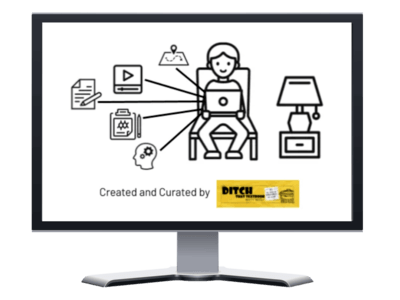
Looking for more remote learning resources?
Our distance learning page has TONS of resources for bringing learning directly to your students no matter where they are!
💻 100 remote learning activities templates and tutorials
💻 Distance learning lesson planning guides and templates
💻 FREE ebooks for getting started or taking your remote teaching farther
For notifications of new Ditch That Textbook content and helpful links:
Are you looking for quality, meaningful professional learning that both equips and inspires teachers?
Matt provides in-person and virtual keynotes, workshops and breakout sessions that equip, inspire and encourage teachers to create change in their classrooms. Teachers leave with loads of resources. They participate. They laugh. They see tech use and teaching in a new light. Click the link below to contact us and learn how you can bring Matt to your school or district!
Is Matt presenting near you soon? Check out his upcoming live events!

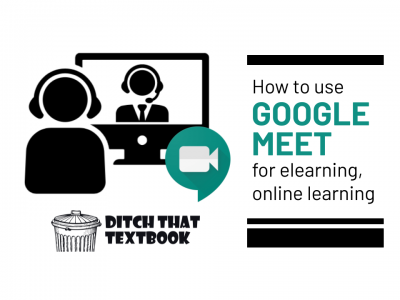
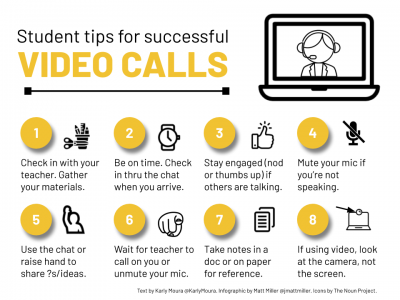


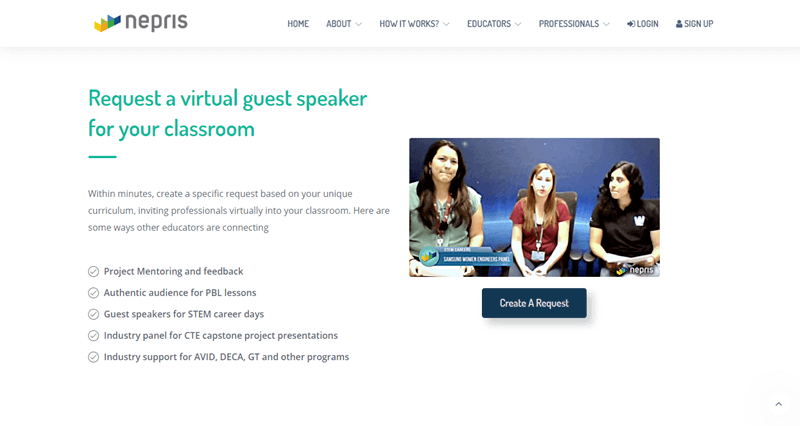



Thank you for this educational article. As we can see, video conferencing provides value to business in the way that it helps connect a business with its customers, suppliers, clients, etc. It brings a business closer to the important factors and may even help it attract new business. So, it is important to seek guidance from trusted AV solutions provider .
hi
Such a great article! Thank you for sharing these video conferencing tips, very helpful. I hope many can get a chance to read this as this is very useful in today’s digital world. It is also important to seek guidance from trusted AV solutions provider
who wanna join my class here is my link
https://www.typing.com/join#608AA6487CEF0
I love meeting new people
And I think this website is very good
The website is nice
Hi😊
Can i learn mathematics
Plz can my darling daughter cam too your loving school
Yea bitch i know what you did that night but no worries that will be taken care of later but the thing is why you always so mean to them kids and then if one day they’ll all get together and jump your ass don’t call me for nothing unless it is something important for me to know and also stay there with them children cause i won’t be able to come and get yall today so all i’m just asking is that you just leave me alone and STFUBASPH
Fuck ya’ll talking bout
Hello I am trying to get on a meeting with my friend
Quite a bit of new information.
Waiting on other PE teachers to see if this fits the classroom environment.
Hello to eveyone
Hello
Simple easy to follow steps and tips
Simple easy to follow steps and tips
Zoom is an excellent tool to use for student learning and engagement.
This is a great resource.
there are so many methods to connect with the kids and to foster engagement
Distance learning can seem hard, but we can do it using the tools and ideas that have been given to us.
wsp
I’ve utilized Google Meet and Zoom multiple times with my students last year, but I really like the idea of including a guest in our discussions. I think this would also be valuable with parent communication–especially with transition years (5th, 8th, 12th).
That is an excellent idea. I would like to employ Zoom meetings with parents this year for a stronger bond in the learning community
Hello!
Hiii I’m pavan my number 8888346404 I’m call boy call me
nobody is gonna call you randomly bro-:v
Hi
hi alisa my name is praem
[…] (On that note: check out Matt Miller’s awesome advice on using Classroom video calls here: Classroom video calls. You can do this. Here’s how.)Don’t forget to engage your students during a video chat. It can be boring to sit through each […]
[…] Related post: Classroom video calls. You can do this. Here's how. […]
sup
hi
hi its makayla
Hi 👋🏼 is this a Quran class or learning something in Islam
Hi